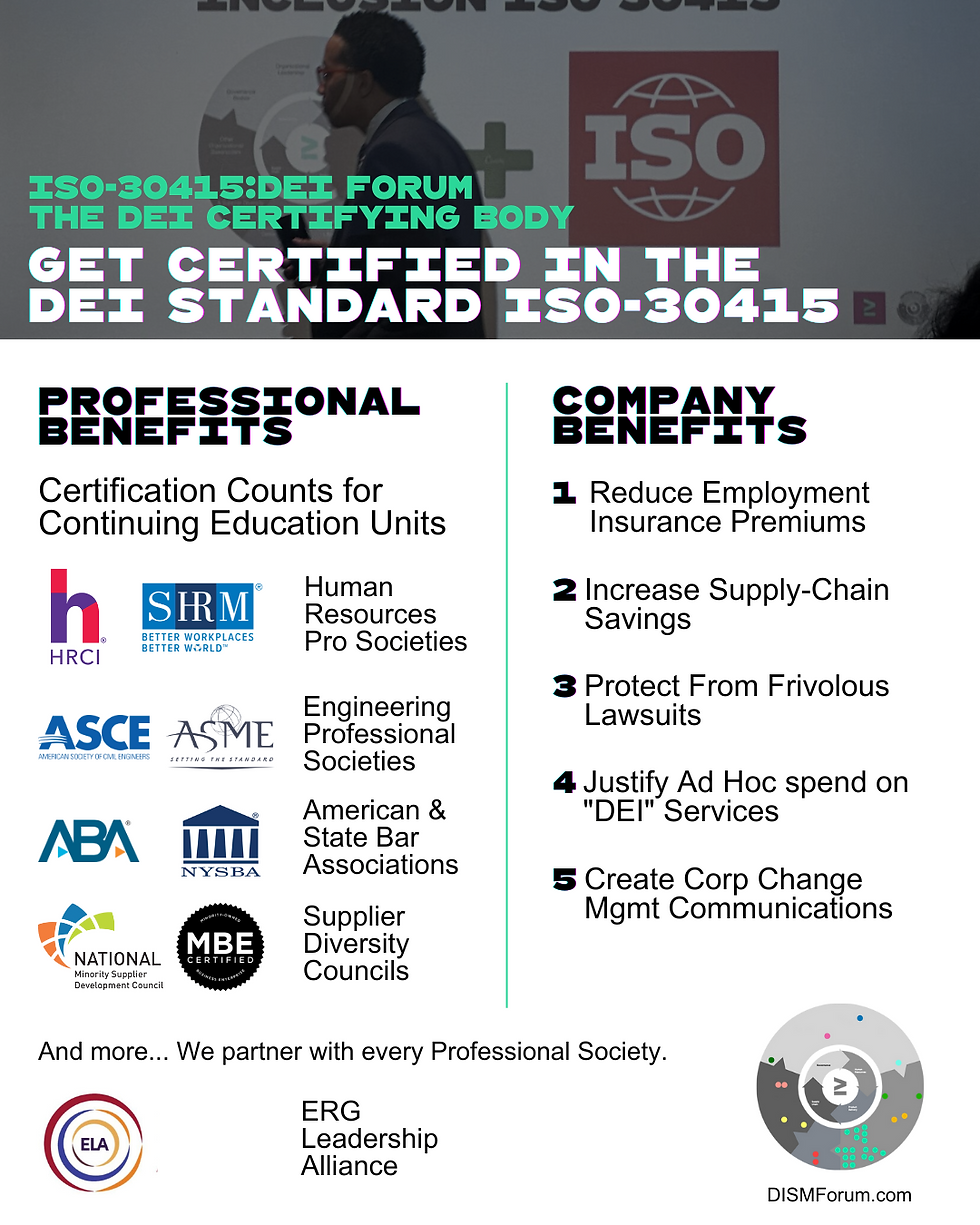The D.O.J. did not Ban D.e.i.
- Tawana Rogers

- Aug 7
- 2 min read

1.The DOJ memo (July 2025) clarifies which DEI practices may violate federal law, particularly those involving explicit race or sex-based preferences (e.g., race-based scholarships, hiring quotas, or preferences). It emphasizes compliance with anti-discrimination laws such as Title VII of the Civil Rights Act and the Equal Protection Clause, warning that some common DEI initiatives could be unlawful if they give preferential treatment based on protected characteristics.
2. ISO-30415 and Legal Compliance ISO-30415:2021 is an international standard for Diversity & Inclusion Service Management (DISM). It is designed to be implemented in compliance with all applicable local, national, and international laws. The standard emphasizes:
- Equity and Accessibility: Ensuring fair treatment, without unlawful preference.
- Contextual Adaptation: Organizations must tailor D&I strategies to their legal and cultural context.
- Risk Management: Identifying and mitigating legal, operational, and reputational risks associated with D&I efforts.
3. Real Risks and Practical Guidance Risks:
- Legal Risk: If your DEI programs include explicit preferences or quotas for hiring, promotion, or benefits based on race, sex, or other protected classes, you may be exposed to legal challenges or loss of federal funding.
- Reputational Risk: Non-compliance with new DOJ guidance could result in public scrutiny or lawsuits.
- Operational Risk: Sudden changes to DEI programs without proper risk management could disrupt workforce engagement and morale. DOJ Memo and ISO-30415 Alignment: - No Ban on DEI: The memo does NOT prohibit DEI activities; it clarifies that DEI must be implemented in a non-discriminatory manner.
- Focus on Inclusion, Not Preference: ISO-30415 supports creating inclusive environments, but not through unlawful preferential treatment.
- Data-Driven and Process-Oriented: Use data collection, training, and internal/external infrastructure to promote inclusion, not as a basis for quotas or exclusive programs .
- Regular Risk Assessment: Use tools like InclusionScore to assess and document your D&I maturity, and adjust practices to stay compliant with evolving legal standards .
4. How to Engage Diverse Populations Safely
- Universal Access: Offer training, mentorship, and advancement opportunities to all employees, not just specific groups.
- Voluntary Data Collection: Collect demographic data with consent, use it for analysis, not for making employment decisions.
- Policy Review: Audit existing policies and practices for potential legal exposure, especially those that could be seen as giving preference based on protected characteristics.
- Transparent Communication: Clearly communicate that your DEI efforts are aimed at fairness, inclusion, and opportunity for all, in compliance with the law.
5. Summary Table: DOJ Memo vs. ISO-30415
DOJ Memo Guidance | ISO-30415 Principle | Action Steps |
Avoid explicit preferences | Equity, Fairness | Review/remove quotas or exclusive programs |
Comply with anti-discrimination | Legal Compliance & Risk | Align all D&I activities with legal standards |
Focus on inclusion, not quotas | Inclusive Culture | Universal access to D&I resources |
Document & assess risk | Risk Management | Use InclusionScore or similar tools |
Bottom Line: You do not need to abandon DEI under ISO-30415, but you must ensure all practices are non-discriminatory and compliant with current law. Focus on building inclusive processes, providing equal opportunity, and regularly auditing your programs for legal risk. This approach both aligns with ISO-30415 and meets the DOJ’s requirements, safeguarding your organization while supporting a diverse workforce. If you need a specific audit or risk assessment, consider using InclusionScore or consulting a certified ISO-30415 D&I professional to ensure your practices are up-to-date and compliant




Comments